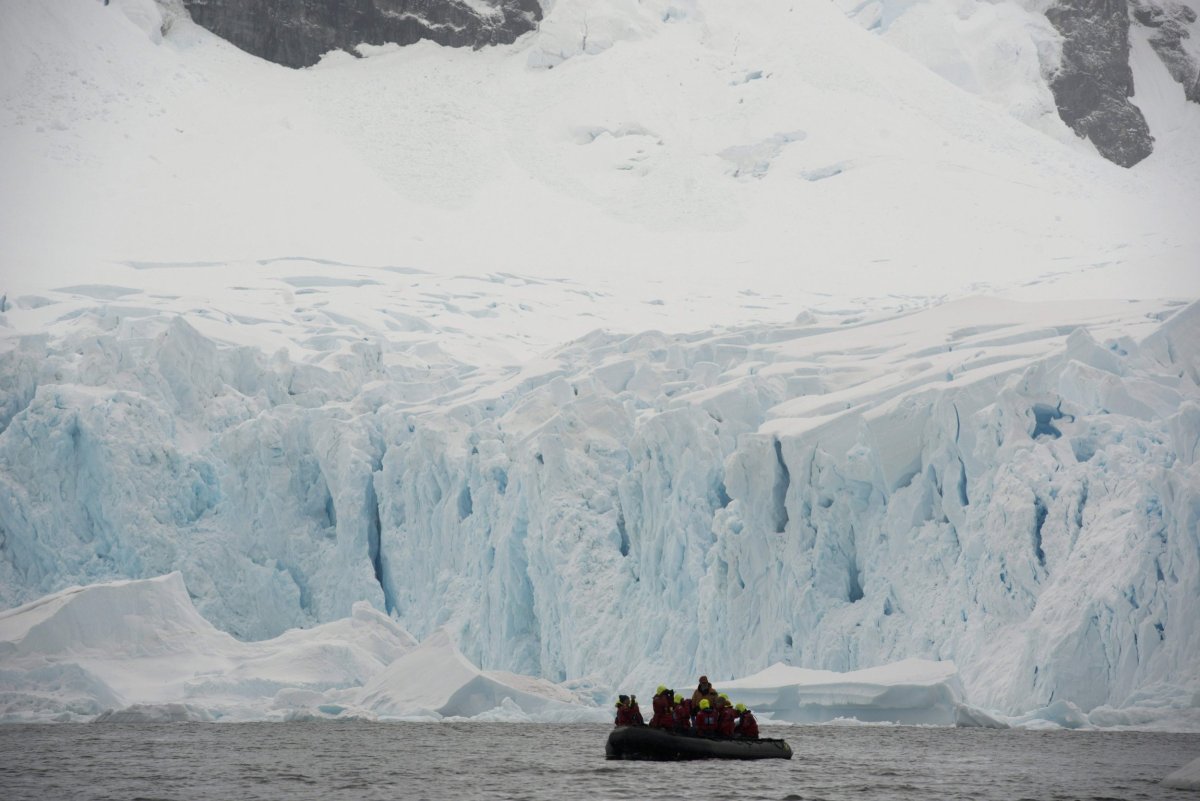In the past 200 years, there has been a 10 percent increase in the amount of snowfall in Antarctica, a new study published November 2017 revealed. The increase in snowfall is a sign that the consequences of climate change may be occurring now rather than in the distant future.
Scientists previously predicted that rising temperatures would eventually increase snowfall, but new research from the U.K. proved that this increase is already happening in Antarctica. For the study, presented at the European Geosciences Union General Assembly in Vienna, Austria this week, British scientists examined 79 ice core drillings. These drillings gave the scientists a visual of compacted snowfall over several years.
Related: Antarctica's Glaciers Are Melting From Below At An Alarming Rate
Next, the compacted snow was analyzed to reveal when it fell and how much fell.
"We measure a suite of chemicals in the ice," lead study researcher Elizabeth Thomas, a paleoclimatologist and head of the British Antarctic Survey ice core group told Newsweek. "They [the chemicals] exhibit a seasonal signal, for example peaking in the summer and reaching a minimum in the winter."

By measuring the time difference between these chemical peaks, the team was able to estimate how much snow fell within a certain year. The analysis revealed that from 2001 through 2010, nearly 300 billion tons more snow fell on Antarctica than had fallen from 1801 through 1810, the BBC reported Monday. Ice records showed that the increases of snow is unusual when compared to snowfall throughout the past 200 years. This suggests that the patterns are not part of a trend but rather the result of something new.
Related: NASA Photos Reveal How Fast Antarctica Ice Sheets Are Melting Into The Oceans
"Changing circulation patterns, warming surface temperatures and reduced sea ice are driving the increase in snowfall," Thomas told Newsweek.
Warmer temperatures mean that there is more moisture in the atmosphere. This could lead to more precipitation, but scientists did not realize how soon this increased precipitation would be happening.
Snowfall increased most significantly along the Antarctic peninsula, which Thomas told Newsweek was likely due to a combination of warmer surface temperatures combined with more sea ice retreating. However, increased snowfall was measured throughout the continent.
The increased snowfall has helped to mitigate rising sea levels by "locking away the water," Thomas explained. As a result, the snowfall has helped reduce sea level rising by several millimeters during the 20th century. However, it's still not enough. According to Thomas, the ice mass from retreating glaciers is still higher than the mass gained from snowfall.
"It is important to note that Antarctica is still losing mass," said Thomas, emphasizing that seemingly "positive" sign is anything but.
Uncommon Knowledge
Newsweek is committed to challenging conventional wisdom and finding connections in the search for common ground.
Newsweek is committed to challenging conventional wisdom and finding connections in the search for common ground.
About the writer
To read how Newsweek uses AI as a newsroom tool, Click here.








